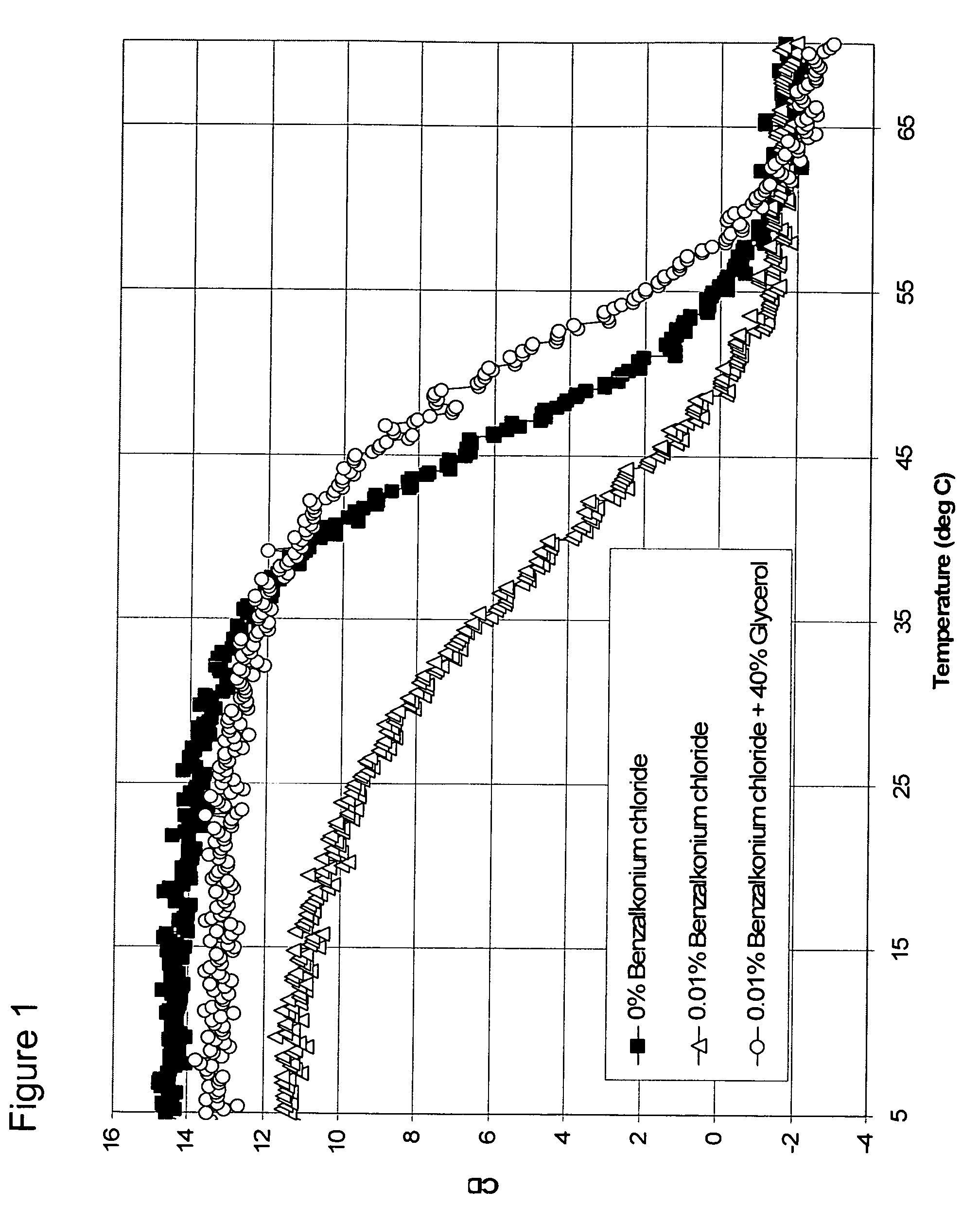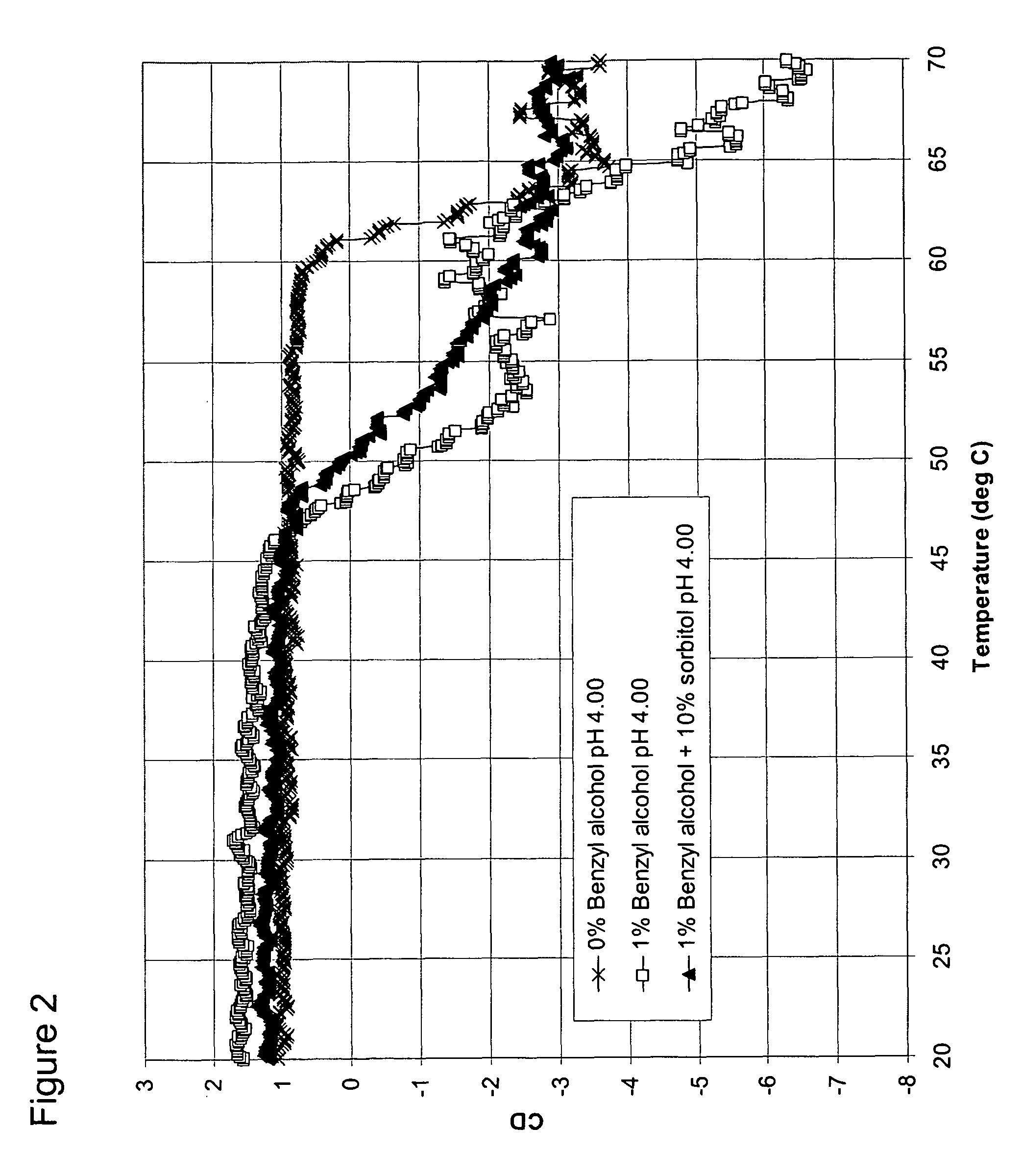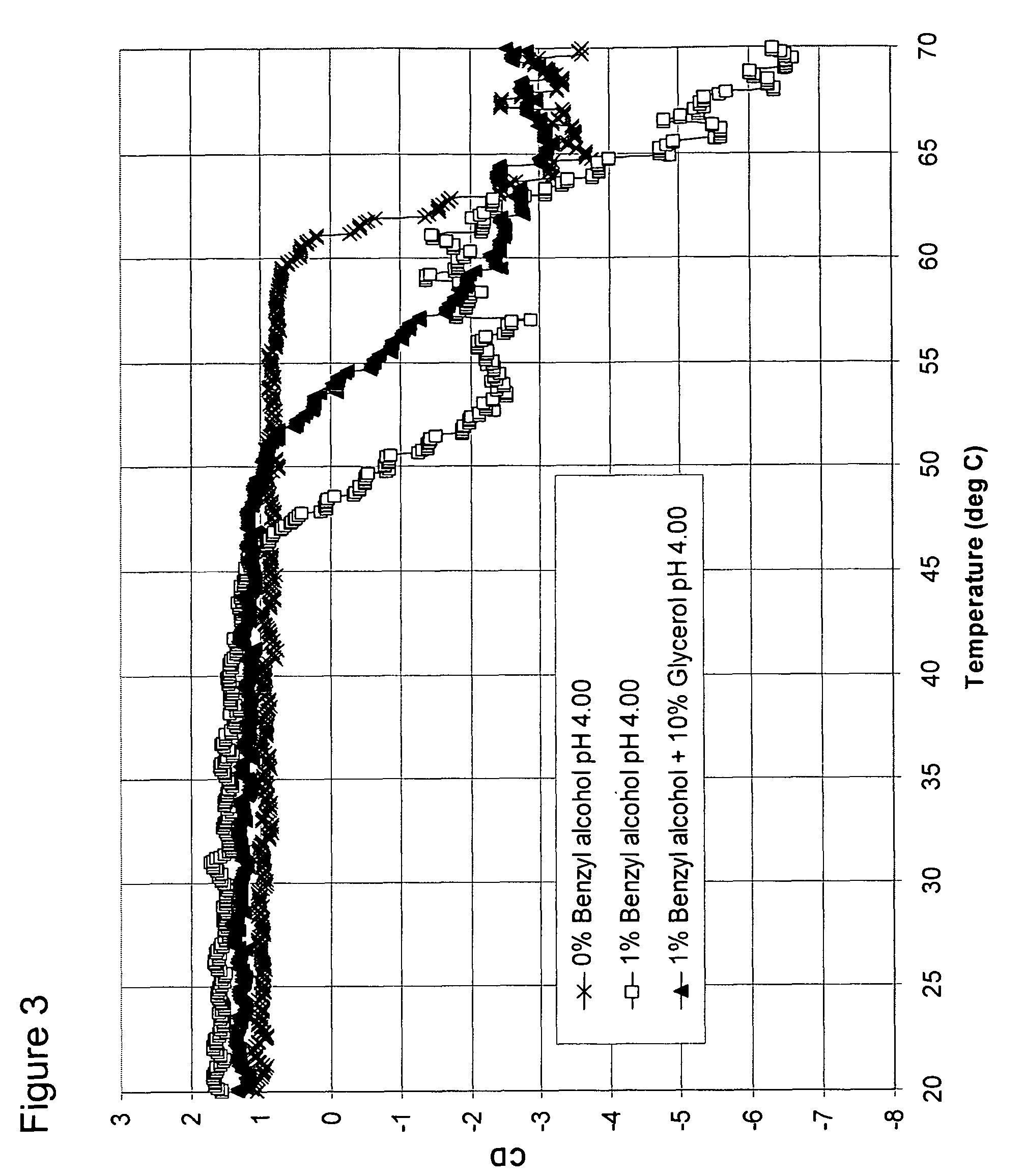Pharmaceutical formulations
a technology of pharmaceutical formulations and proteins, applied in the field of stable aqueous pharmaceutical formulations of proteins, can solve the problems of destabilizing the tertiary structure of active proteins, improperly folding inactive proteins, and unfolding or improper folding of active proteins
- Summary
- Abstract
- Description
- Claims
- Application Information
AI Technical Summary
Benefits of technology
Problems solved by technology
Method used
Image
Examples
example 1
Darbepoetin
[0072]Recombinantly produced bulk Darbepoetin was concentrated to 10 mg / mL using centriprep 10 K centrifugal concentrators. Formulations used in the experiment were with 0.6 mL of the bulk solution (for 2 mg / mL final concentration of Darbepoetin), 20 mM sodium phosphate, 100 mM sodium chloride and at a pH of 6.90.
[0073]Formulations
[0074]A. Assessment of Preservatives for Destabilizing Effect with Darbepoetin
[0075]Five formulations with different destabilizing preservatives were prepared. All formulations contained 1.0 mg / mL Darbepoetin, 20 mM sodium phosphate, 140 mM sodium chloride, and were at a pH of 6.00. Concentrations of destabilizing preservatives were as follows: 0.5% phenol (0.057 M), 0.5% sodium benzoate (0.035 M), 0.5% m-cresol (0.048 M), and 0.5% benzyl alcohol (0.048 M). The CD spectrum of each formulation was observed at 290 nm from 5 to 80° C. and compared against a control formulation with no preservative. The order of the denaturing effect of these preser...
example 2
Leptin
[0087]Formulations
[0088]A. Control Formulation
[0089]A formulation is prepared containing sodium acetate, water, and leptin at a final concentration of 0.5 mg / mL, with a pH between 4 and 5. This formulation serves as the control solution having neither osmolyte nor destabilizing preservative.
[0090]A second control formulation is prepared containing sodium acetate, water, benzyl alcohol, and leptin at a final concentration of 0.5 mg / mL, pH 4-5. This formulation serves as the control solution having no osmolyte, but with a destabilizing preservative.
[0091]B. Formulations of Leptin with 1% benzyl alcohol or 0.02% benzalkonium chloride and glycerol, sarcosine, or sucrose
[0092]A formulation of 20% glycerol, 1% benzyl alcohol, and 0.5 mg / mL leptin is prepared by mixing sodium acetate, water, glycerol, benzyl alcohol, and bulk solution of leptin and adjusting the pH to between 4 and 5.
[0093]A formulation of 500 mM sarcosine, 1% benzyl alcohol, and 0.5 mg / mL leptin is prepared by mixin...
example 3
GCSF
[0098]Formulations
[0099]A. Control Formulation
[0100]A formulation was prepared containing sodium acetate, water, and GCSF at a final concentration of 3 mg / mL, and a pH of 4. This formulation serves as the control solution having neither osmolyte nor destabilizing preservative.
[0101]A second control formulation was prepared containing sodium acetate, water, benzyl alcohol (1% or 0.097 M), and GCSF at a final concentration of 3 mg / mL, and a pH of 4. This formulation serves as the control solution having no osmolyte, but with a destabilizing preservative.
[0102]B. Formulations of GCSF with benzyl alcohol and sorbitol, glycerol, or sarcosine
[0103]A formulation of 10% (0.549 M) sorbitol, 1% benzyl alcohol and _ mg / mL GCSF was prepared and adjusted to a pH 4.00.
[0104]A formulation of 10% (1.357 M) glycerol, 1% (0.097 M) benzyl alcohol, and 3 mg / mL GCSF was prepared and adjusted to a pH of 4.00.
[0105]A formulation of 500 mM sarcosine, 1% (0.097 M) benzyl alcohol, and 3 mg / mL GCSF was pr...
PUM
| Property | Measurement | Unit |
|---|---|---|
| concentration | aaaaa | aaaaa |
| concentration | aaaaa | aaaaa |
| concentration | aaaaa | aaaaa |
Abstract
Description
Claims
Application Information
 Login to View More
Login to View More - R&D
- Intellectual Property
- Life Sciences
- Materials
- Tech Scout
- Unparalleled Data Quality
- Higher Quality Content
- 60% Fewer Hallucinations
Browse by: Latest US Patents, China's latest patents, Technical Efficacy Thesaurus, Application Domain, Technology Topic, Popular Technical Reports.
© 2025 PatSnap. All rights reserved.Legal|Privacy policy|Modern Slavery Act Transparency Statement|Sitemap|About US| Contact US: help@patsnap.com



